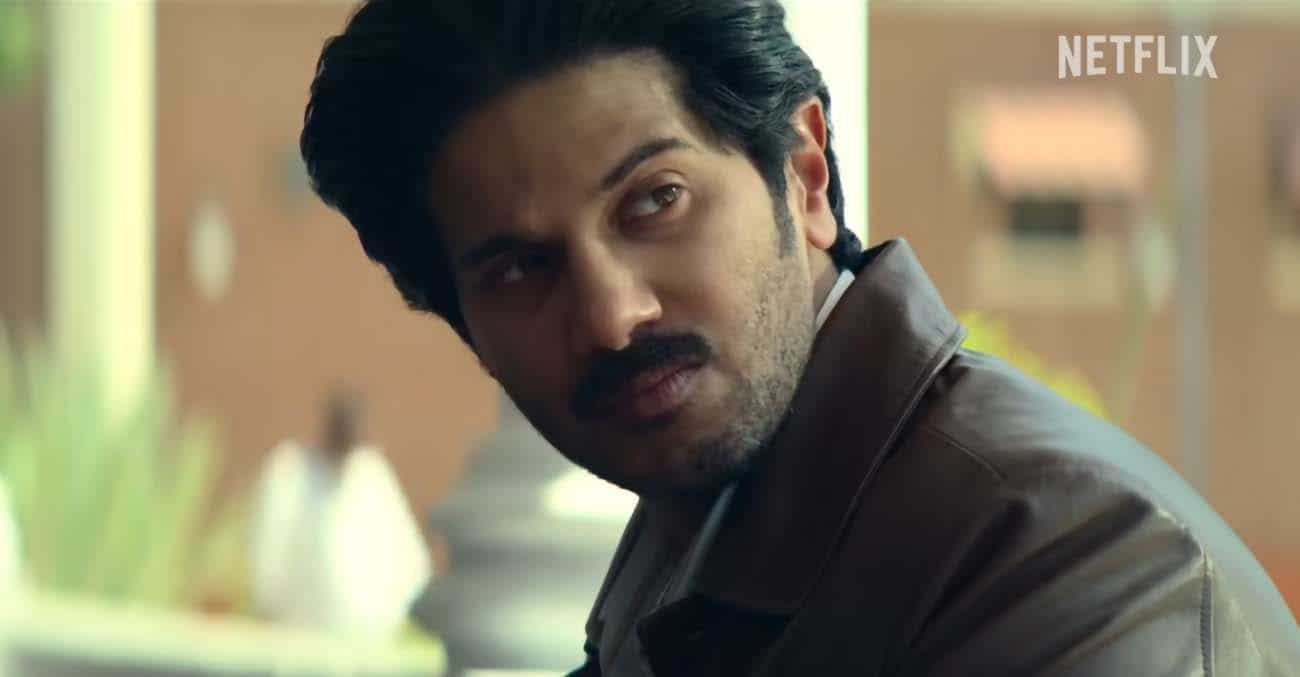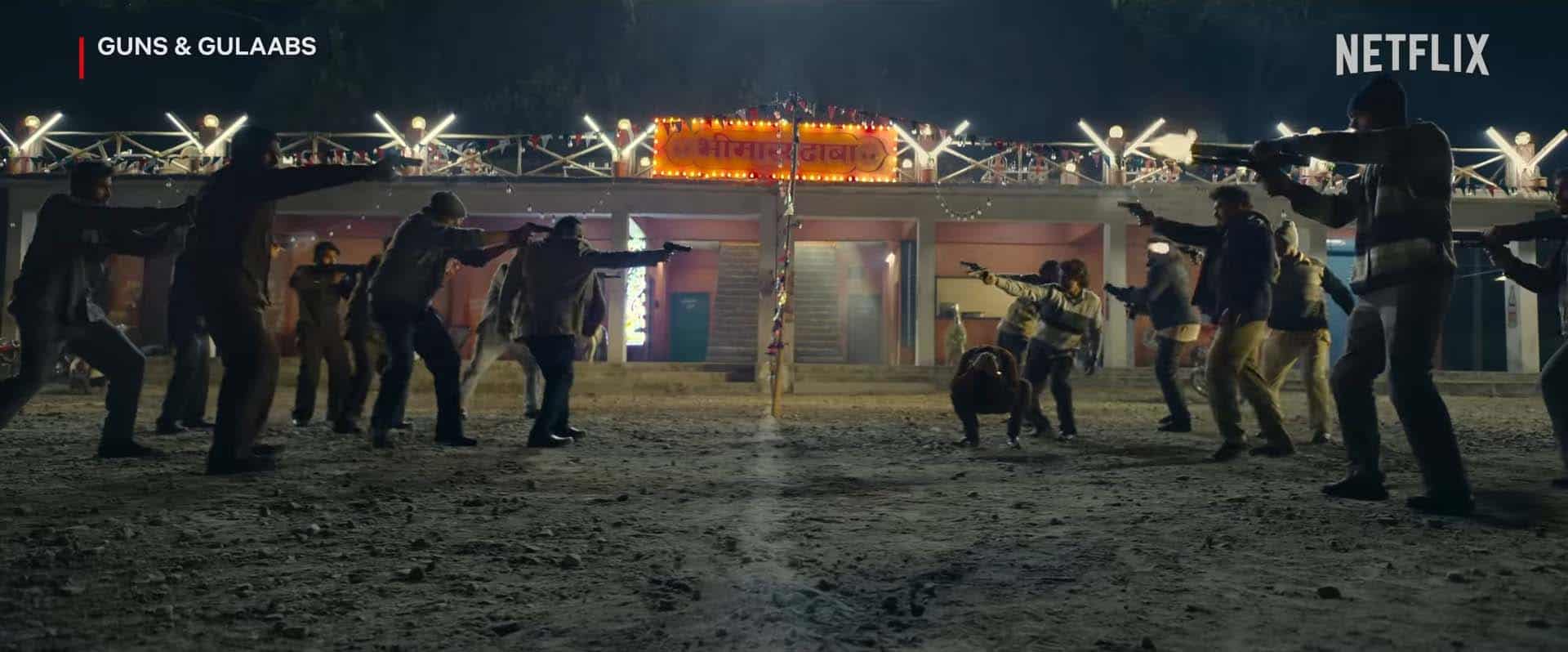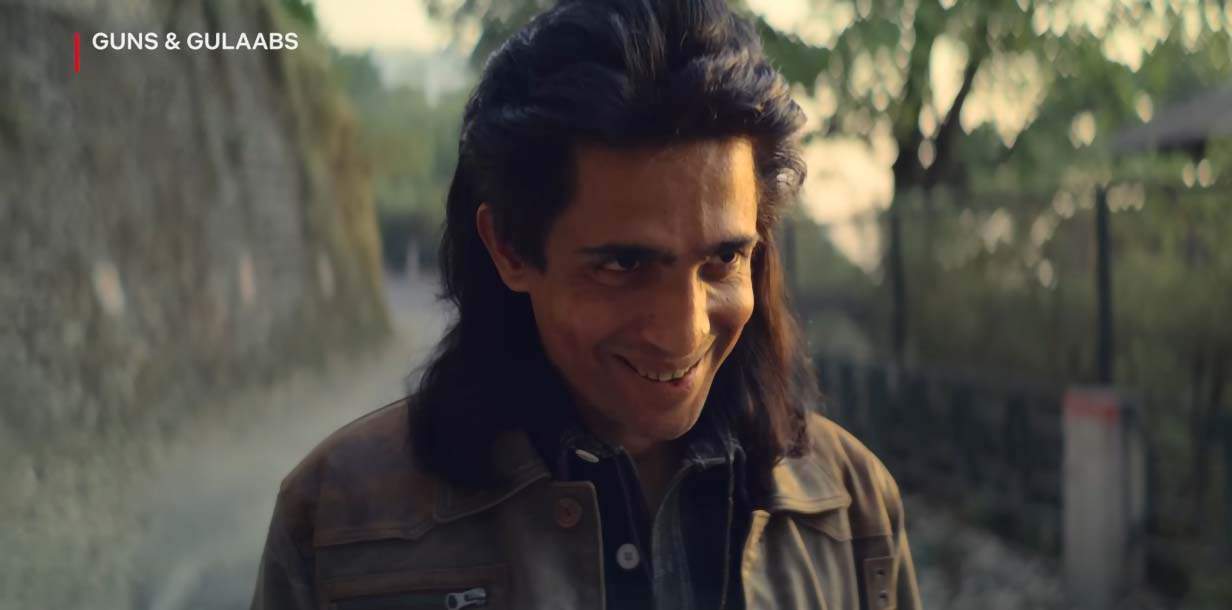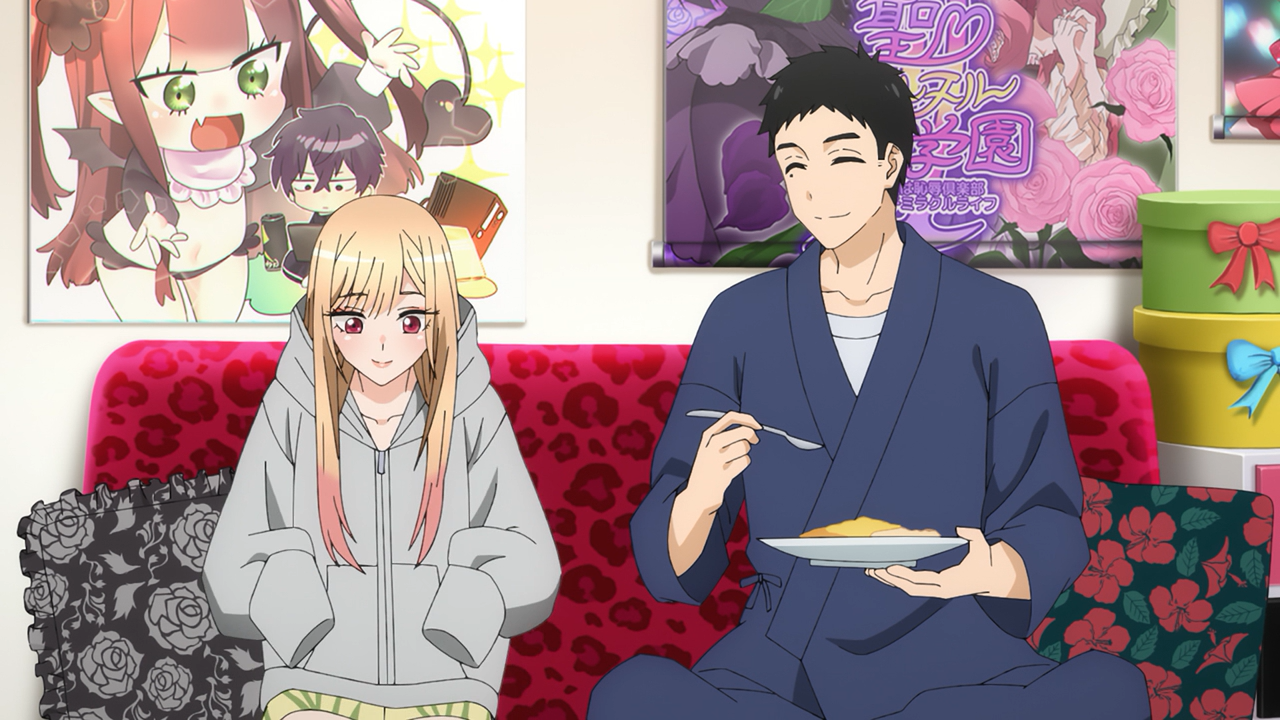Guns & Gulaabs came in with 90s Nostalgia, Tarantino, and Guy Ritchie-style violence and characters. Dulquer Salmaan was making his OTT debut with the Kings of OTT themselves, Raj and DK, who are in their top form.
Despite so many of my favorite elements coming together, I have to confess that after the first few episodes of Netflix’s brand-new series Guns and Gulaabs, I almost gave up. My request to you is if you’re tempted to quit halfway through the show, please don’t and watch until the end.
A small town like Gulab Ganj is fertile land for sprawling violent stories like we’ve seen in Gangs of Wasseypur, Mirzapur, and Tbbar. It was exciting to see Raj and DK get out of their comfort zone of contemporary Mumbai and create a universe bigger than ever before, and the effort shows.
Here is Guns & Gulaab Ending Explained:
Guns & Gulaabs Plot
There are a dozen different characters seemingly unrelated to each other with motives of different scales. There’s a sweet and meek mechanic called Tipu who wants to confess his love for the teacher at the local school.
They are a bunch of schoolboys trying to deal with their hormones. One of them whose part-time job is to be a freelance writer of love letters for one side lovers like Tipu and aging Don Ganchi, who ruled Gulab Ganj and its opium trade. Don Ganchi wants to pass on his legacy to his son Jugnu AKA Chotu, trying to earn and live up to that legacy himself.
Dulkar Salmaan as Arjun, an honest cop who’s just arrived in town to investigate this opium mafia. He was even cuter when he tried to say “Bhen****.” Or a maniacal villain called Charkat Atmaram, who we will talk about in just a bit, and so many more quirky characters who we are waiting to see how they will be linked to the plot.
But the problem is the plot itself, or rather how much time the screenplay and the characters take to get to the plot. I agree that the treatment of a long-form web series is very different from that of a film.
While the film is much more plot-driven and has to engage and entertain the audience within two hours, TV shows are much more character-driven and make the audience spend time with these characters. Engaging in mundane tasks and exploring how they react to regular scenarios makes us relate to them no matter how unrelatable their eventual actions may be.
But even though there are some standout sequences, like how the mythology of 4 Cut Aatmaram is introduced, or the one with Paana Tipu and a bunch of boys who mostly don’t understand English sitting around in the field and are lost in the music of Brian Adams.
This was such a quintessential 90s moment of how he used to all join music together before Walkman, MP3 players, and Spotify even came along. Or how there are butterflies in the air each time. TJ Bhanu as Lekha appears on the screen.
Guns And Gulaabs Review
The Wes Anderson-inspired frames by Pankaj Kumar play the characters in corners or centers of a static Postcard Perfect shot. Or the extremely charming closing credits with each name styled as a different 90s element, just like a Mango Bite candy where there are so many different flavors you taste when it touches your tongue. There’s a lot to love in Guns and Gullabs.

But the treatment in the early episodes makes you tired of chewing the candy, and it starts to lose its taste slowly. The attempt to develop characters who are interesting on paper gets tiring after repetitive scenes. Insignificant and uninteresting subplots distract us from the actual plot, which refuses to get going.
Even the trademark Rajan DK humor, which is so prevalent, whether it’s in dialogues of Family Man or the set pieces like the paper high sequence in Farzi. It’s all either mostly missing in the earlier episodes, or it doesn’t completely translate to the audience who’s looking for something to grab onto.
Even though there was nothing to hate as such, I felt cold and disconnected. And by Episode 3, I almost gave up. But since it was the weekend, I decided to stay on, and by episode 5, the show slowly started picking up. And without spoiling any further, whatever the initial episodes lacked in terms of action, humor, or twists, or keeping the audience at the edge of the sofa, Raj and DK saved the best for last.
The final two-part episode, with an actual interval in the middle, is the culmination. It goes back and forth in time to show us how these different characters, who should have nothing to do with each other, land up in that one situation that we’ve seen in multiple Guy Richie movies like Lock Stock And Two Smoking Barrels and Snach, giving us that much needed Boom.
Standout Characters
Apart from every other standout element that I’ve mentioned, there are three characters and three performances that sustain your interest with each ticking episode.

Firstly, Adarsh Gaurav, in his limited filmography since his debut in My Name is Khan back in 2010, Adarsh has given us some unforgettable characters, especially Balram in The White Tiger. Here, he takes on a totally different kind of beast, the role of a son who just wants his father’s love or even his acknowledgment. For Rajkumar Rao, this role reminds us of so many of his previous roles, like Ludo or Gangs of Wasseypur.
But even despite that hangover, it feels fresh because of the effortless charm, the humor, and the look of helplessness he brings into every frame, which makes the transformation of his character so much more impactful. And even within that transformation, his helplessness is intact, and he forgets his shawl at a certain point and hurries to bring it back.
But easily the most unforgettable and stand-out performance of the entire series, a character that deserves his own spin-off series, is 4 Cut Atmaram, played by Gulshan Devaiah. I’ve been watching Gulshan, from his initial roles in That Girl In Yellow Boot to Shetan, to the superb Hunter, to one of my favorite double role performances of all time, as Karate Mani and Jimmy in Mard Ko Dard Nahi Hota.
Despite such memorable roles, it still feels like the industry never really gave him his due credit until his latest new chapter in OTT. In 2023 alone, he’s already giving two teller back-to-back performances. He played Devi Lal Singh, the progressive father, a helpless police officer in Dahaad.
In Guns And Gulaab, he played the hilarious, unpredictable, scary, maniacal Atmaram, who finishes his victims with four slashes of his knife. A rural legend that’s a combination of a Slasher Film from 80s horror movies.
Guns & Gulaabs Ending Explained
Guns & Gulaabs starts with Babu Tiger’s dying and the note he left for Gangaram, and it isn’t until the very end that more information regarding this is made clear. Babu Tiger had left his revolver as the only legacy Tipu would receive from his father.

After all this time, Gangaram acknowledges that he does not remember what the goon had asked him to say to Tipu when he had previously told him something. It’s possible that the statements were insulting or rude, and Gangaram decided not to repeat them after witnessing Tipu’s boldness.
Despite being severely hurt and being stabbed multiple times himself, Tipu manages to fire Atmaram with this particular gun to take him down. Tipu feels satisfied with the fact that he has successfully exacted his revenge as Bunty and Chandralekha carry him to the hospital, and the guy appears to die while being hugged by his beloved.
Back in the hospital, Ganchi is given the shock of his whole existence when Jugnu appears, entirely dressed as a lady. Jugnu admits that they have always secretly assumed the identity of a woman imprisoned in the world of men and have now decided to abandon the lie.
After removing Ganchi’s oxygen mask and thus killing him, Jugnu declares that they now want to be identified as a female and will be leading the Ganchi’s gang from now on.
The ending of Guns & Gulaabs also implies that, in spite of being shot from a close distance, Atmaram was able to survive, almost like a fictional character with seven lives. Tipu’s bullet brings the total to five deaths, while Atmaram still appears to have two more in some unclear magical way.
Also Read: The Truman Show Ending Explained: The Dark Hidden Meaning Behind The Movie




